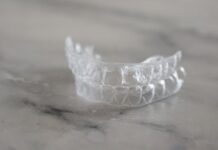Wrist Pain: Overview
Wrist pain is common among weightlifters, and it may result from sudden impacts of injuries. As well as this, wrist pain may also result from long-term problems, such as repetitive stress and other overuse injuries. Certain factors can lead to wrist pain in the gym. For example, lack of body warmup, especially hands or wrist warmup, poor positioning, and overuse are some of the common causes causing wrist pain at the gym. Here we come with the possible wrist injuries resulting from weightlifting, causing wrist pain. As well as this, you can also get the complete details on the preventive measures, and the benefits of wearing the best wrist support to reduce the chances of writs pain at the gym. So, let’s start here;


Common causes or injuries leading to wrist pain
The following are the common causes or injuries that can cause wrist pain during or after weightlifting:
1. De Quervain’s tenosynovitis
The chronic overuse of the wrist is one of the leading causes of De Quervain’s tenosynovitis. The repetitive movements day after day may result in pain and irritation. Remember that lifting heavy objects or too much weight is one of the common activities contributing to De Quervain’s tenosynovitis.
De Quervain’s tenosynovitis may result in pain near the thumbs’ base. As well as this, swelling around the thumbs’ base, difficulty moving, and sticking sensation around your thumb are other symptoms of De Quervain’s tenosynovitis.
2. Intersection syndrome
Intersection syndrome usually occurs due to traumatic conditions in the second extensor compartment. The condition may result from repetitive stress or activities of the wrist flexion or extension. Weightlifters, rowers, and other athletes involved in the repetitive movements of the wrist or hand may be at a high risk of Intersection syndrome.
The common symptoms of Intersection syndrome may include pain and swelling of the tendons in the forearms’ back and wrist. You may also feel a grinding sensation when you move your fingers.
3. ECU Pain
ECU pain may result from ECU tendinitis – an inflammation of the extensor carpi ulnaris tendon. This tendon is located on the pinky side of the hand. Remember that injury or pain to the ECU tendons may result from the forceful or sudden twisting of the wrist. The condition may also result from repetitive movements over a long time. This repetitive movement places stress on the wrist.
Weightlifters and athletes involved in games using rotated sticks, bats, clubs, and rackets, are at a high risk of ECU pain. The common symptoms of ECU injury may include wrist pain and loss of grip strength.
4. TFC injury
We find a cushioning structure within the wrist known as triangular fibrocartilage complex, TFC. Remember that falling on an outstretched hand can tear TFC, wrist ligaments, or both. While overdoing or falling on an outstretched hand, Weightlifters may develop TFC injury.
The condition may result in pain on the ulnar side of the wrist. As well as this, you may feel difficulty while rotating your wrist and reduced ability when gripping the objects tightly. You may also feel weakness around your wrist joints or tendons in some severe conditions.
5. FCR tendinitis
Pain over the volar radial wrist is caused by the inflammation of the flexor carpi radialis. This inflammation is known as flexor carpi radialis, FCR tendinitis. It’s been found that overuse or repeatedly lifting heavyweight with the palm up may contribute to the FCR tendinitis.
Pain is the basic symptom of FCR tendinitis. Besides pain, you may also feel swelling and redness on the wrist radial. As well as this, you may also feel creaking or squeaking sounds or sensations.
6. Stress Fractures
A wrist stress fracture is referred to as a small crack in the wrist bone. Studies have shown that the small crack in the wrist bone usually develops from repetitive traumatic conditions caused by overuse. Weightlifters who lift heavy weights continuously or face other traumatic conditions, such as direct falling on the outstretched hand, may develop wrist fractures.
The wrist stress fracture may result in severe pain that becomes worse when squeezing, gripping, or moving your wrist or hand. Other symptoms of wrist stress fracture may include swelling, tenderness, bruising, and obvious deformity.
7. Wrist ligament injuries
Ligaments may injure due to twisting, bending, or other forceful impacts on the wrist. Weightlifters who lift too much weight too quickly may apply great force or pressure on their wrists, resulting in ligament injuries. The condition may make you feel pain around your wrist joints or muscles. As well as this, you may also feel swelling, tenderness, bruising, weakness, and loss of motion.
8. Carpal tunnel syndrome
Excessive pressure or stress on the maiden nerve of the hand or wrist may result in carpal tunnel syndrome. As weightlifters put extra pressure on their wrists while lifting heavyweight, they may be at a high risk of developing carpal tunnel syndrome. Pain is the basic symptom of carpal tunnel syndrome. However, other symptoms may include tingling sensation, numbness, and weakness.
How to prevent wrist pain in weightlifting
Experts or weightlifting professionals suggest some preventive measures that help reduce the chances of wrist injuries during or after weightlifting:
1. Warm up properly
Before starting every single workout session, warming up your body is crucial. Ensure that you warm up your body accurately to get maximum results. Remember that lack of warmup or a little warmup can put you at a high risk of wrist injuries.
2. Proper form and positioning
Your form and position matter while lifting heavyweight at the gym. Remember that a bit of detraction or poor positioning can cause serious injuries to several parts of your body, and the wrist is not an exceptional case in such a scenario.
3. Learn proper weightlifting techniques
Weightlifting is a proper form of workout. You need to pay proper attention to learn exact weightlifting techniques. Ensure that you learn all the techniques under the guidance of your professional workout trainers.
4. Wear wrist supports
Wearing the best wrist supports helps you in a variety of ways. For example, they help reduce pressure and stress on the wrists during the workout, helping reduce the chances of injuries. As well as this, these wrist braces help speed up the recovery process following a wrist injury.
5. know your limits
In almost all aspects of life, you need to know your limits to have a balanced life. The same rule also applies when you go to the gym for weightlifting and other workout sessions. Before starting your session, you need to know what you can do or cannot do with weightlifting. Remember that overdoing can cause serious harm to your body, and sometimes weighting injuries may also keep you away from the gym for a long time. So, do not be over-smart and lift the weight according to your practice or capacity.
Buy the best wrist braces
Wrist injuries are common during weightlifting due to several reasons. We have done extensive research and found all the potential reasons that can cause wrist injuries during weightlifting. As well as this, you can find a list of the injuries resulting from weightlifting. These are essential for every weightlifter to know how many challenges they may face during their weightlifting session.
However, we have provided the most effective preventive measures suggested by experts, helping you prevent wrist injuries. Moreover, wearing the best wrist supports also help you get a safe weightlifting experience.
























